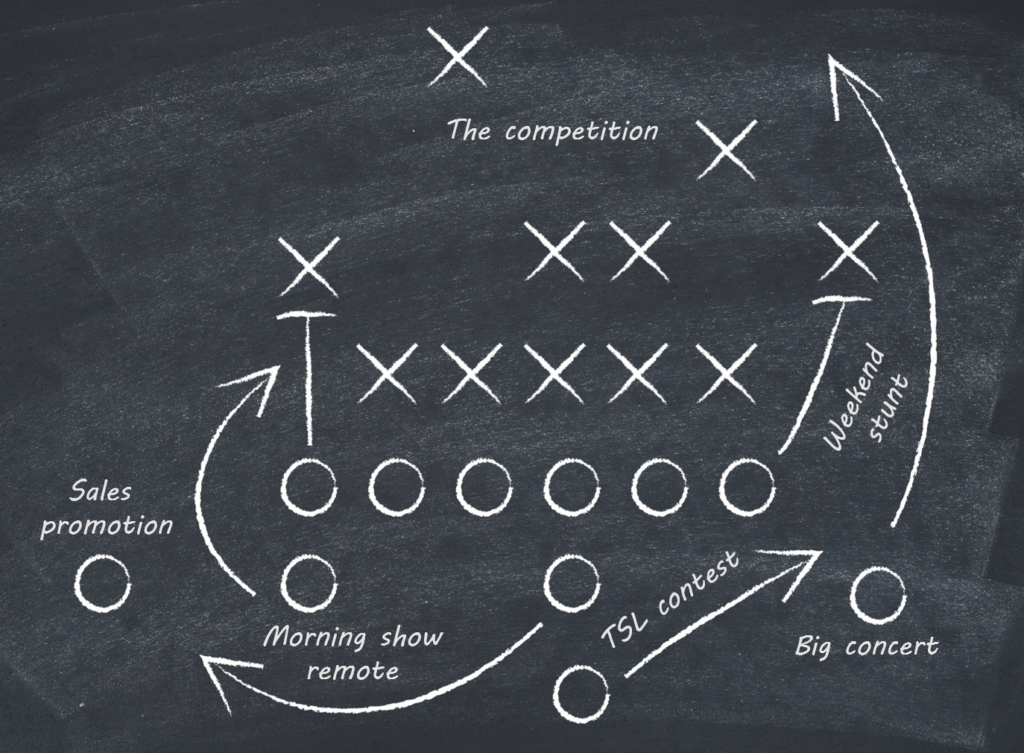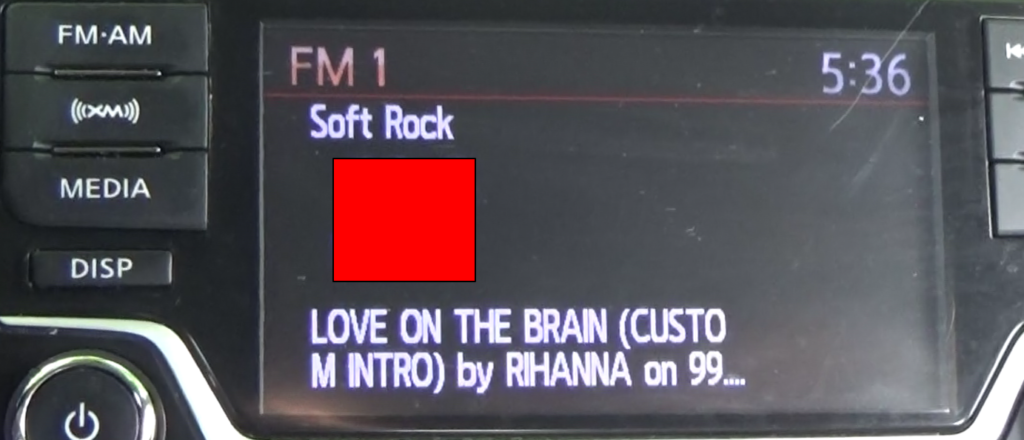
Last week, we had we would call a very good day for this blog. Our post on World Radio Day 2020 – accompanied by all those great stories from radio personalities – resonated with many of you.
And naturally, many of these tales were from the past – in some cases, many years ago. That’s a reflection on radio’s rich history in this country. It is easy to recall memorable moments from past years. When you look at the collected history of the radio broadcasting industry here in the U.S., you see a long road filled with great brands, bigger than life personalities, and community leadership. Many of these stations have stood the test of time.
We blogged about this exact topic last week, following Sean Ross’ feature on the “35 Club” – stations in larger markets that have remained in format with the same call letters since the early 80’s. The stations on this special list are all very different – markets, formats, talent, you name it. But when it comes to the way they were built, nurtured, stewarded, and grown, there are more similarities than differences.
And not much has changed over the years. The building blocks of great radio brands remain constant, in most cases a step-by-step approach that probably looks a lot like this:
- Research and analysis of the target market
- Creation of strong content and personalities aimed at the audience opportunity, engineered by a content visionary (PD)
- Assemblage of a talented, professional staff
- Deployment and training of a focused sales marketing team
- Excellent execution year after year
- Research and analysis of progress, competitive forces – adjusting accordingly
- Realistic goal setting as the brand matures
- Rinse and repeat
Yes, there are other specific steps that can make or break a radio brand-building strategy – personality development, community involvement, a great sound (technically and aesthetically), strong and steady management, to name just a few. But overall, the above list form the x’s and o’s that characterize the launch and sustainability of great radio stations.
Many broadcasters have a demonstrated ability to execute these types of plans, whether they’re employed in the commercial, public, or Christian sectors. And most of us have learned – sometimes the hard way – what happens when we skip a step, take a shortcut, or otherwise don’t do our due diligence – it almost always ends in stunted growth, abject failure, or a short-lived “Roman candle” success or “one book wonder.”
Radio pros speak a common language with this paint-by-numbers approach to launching and growing radio stations. While we may differ on issues like consolidation, voicetracking, or syndication, there’s not much wiggle room when it comes to successful radio station brand building. You either follow the playbook, or your destiny is an impending format change, staff turnover, or worse.
Why then do these same disciplined broadcast professionals often fall short when it comes to building digital brands, assets, content, and platforms? Why are so many of broadcast radio’s online products mediocre at best, and inferior at worst? Streaming channels are often unlistenable, drop out, and contain awkward on and off ramps to repetitive, and excruciatingly long stopsets. Mobile apps are often limited, loaded with bad banner ads and other obstacles to listening. Podcasts are just so-so, often non-competitive in a marketplace that is growing with each passing day. And videos are often amateurishy produced.
This is not to say that all of radio’s digital efforts are substandard, because they’re not. There are numerous examples of great new media content. But across the broad spectrum of the radio broadcasting industry in this country, digital has typically been an afterthought, a sideshow, cottage industry, or side hustle – rarely the focal point of support, emphasis, resources, and expertise.
Oftentimes, these digital assets are poorly promoted – on-air and off. That’s because most of radio’s managers are still compensated and bonused primarily on their terrestrial product’s ratings and revenue.
As a result, programmers and brand managers often lack the time, the incentive, or even the curiosity to analyze their brand’s digital performance even though there are often solid metrics available loaded with learning.
solid metrics available loaded with learning.
Too often, the rank and file at radio stations – in programming and sales – have no motivation to produce better new media products and to market them skillfully – even though there’s so much more competition in the digital arena. They simply have little to no skin in the game.
And then there’s the widespread belief that selling radio spots still produces dollars, while digital products only generate dimes.
Most radio pros play the game very well – strategically and tactically – especially when they’re up against their peers. But in the digital ecosphere, we’re talking about a more complicated matrix. Competitive companies aren’t family owned radio businesses – they’re Amazon, Google, Facebook, and others with no shortage of human and financial resources.
Why don’t more consumers listen to broadcast radio’s streams? Is it because they don’t want to listen to radio on their smartphones? Or maybe it’s because the streaming experience of radio stations is often inferior because of commercial load, herky-jerky transitions, poor content, and substandard quality.
Have you taken the time to listen and observe what broadcast radio looks like in newer connected vehicles with touchscreens? The artist/title and other information you see is called metadata. It is very inconsistent from station to station, company to company. Some operators took charge when the NAB commissioned an “audit” of in-car radio displays in 2017, followed by free “best practices” documents directed at both engineers and programmers. These documents developed “best practices” for broadcast radio’s in-vehicle appearance, use of metadata, and applications of art (albums, stations and personality logos) in order to create a comparable experience to Spotify, Pandora, and SiriusXM in cars.
 But too many others never read the memo. Their displays – on HD Radio or RDS systems even today – are often inaccurate and sloppy, including misspellings, usage of all upper case information, and an overall shaky experience. This is another of those areas where broadcast radio has to get with the program, because over time, consumers realize the difference.
But too many others never read the memo. Their displays – on HD Radio or RDS systems even today – are often inaccurate and sloppy, including misspellings, usage of all upper case information, and an overall shaky experience. This is another of those areas where broadcast radio has to get with the program, because over time, consumers realize the difference.
And let’s not forget the lion’s share of broadcast radio listening takes place while people are rolling along on four wheels. How stations look in the dashboard is important in the creation of a consistently attractive experience.
I have no research to prove this, but I believe in my heart of hearts that as the Internet era cascades along, consumers are becoming more and more discriminating and less tolerant about their media and content experiences. Listening to Spotify, watching Netflix, checking your steps on your Apple Watch – these things tend to work the first time and they work well. When they don’t, consumers no longer have to tolerate a kludgy experience. They have other options.
That’s why the ongoing question – do we build or buy – is so timely. Do radio companies have the runway and the resources with which to create their own tech subsidiaries? Or is success more probable by purchasing an up-and-running company with success in the space, qualified, focused people, and a plan that’s not based on meters, diaries, or spot sales.
 For companies trying to build assets and franchises on their own. it’s often an uphill battle. It’s not just that broadcast radio people often lack the skills, the training, and the experience. It’s because they’re totally consumed with radio – keeping their stations on the air, maintaining or growing listening levels, and hitting sales goals.
For companies trying to build assets and franchises on their own. it’s often an uphill battle. It’s not just that broadcast radio people often lack the skills, the training, and the experience. It’s because they’re totally consumed with radio – keeping their stations on the air, maintaining or growing listening levels, and hitting sales goals.
Most are working multiple jobs, and the pressure of chasing ratings and generating sales, not to mention all their other tasks, makes it damn near impossible to build an entirely new platform. Or sleep.
You can bet developers, engineers, programmers, and strategists at tech companies aren’t worried about voicetracking tomorrow’s show or making an appearance at this afternoon’s phone store remote while they do their main jobs.
Those radio rules of the road are still impressive today. While they may have been developed by the patriarchs of radio programming back in the 60’s and 70’s, their basic tenets and principles still ring true today. They provide a fundamentally smart foundation for creating competitive radio stations.
Modified and adapted, they can easily be held up to today’s digital innovation projects that often preoccupy the time and attention spans of so many radio professionals.
After all, content is content, no matter on what screen, device, or network that carries and displays it. I was reminded of that the other day when the Publicis Groupe’s Tom Goodwin fired off these tweet response:
Nobody should be allowed to say “online content”. It’s publishing. The fact it travels over packets of data is irrelevant. What’s relevant is billions of people see it. https://t.co/LUUF8FWU1S
— Tom Goodwin (@tomfgoodwin) February 16, 2020
In broadcast radio’s quest to be relevant in the digital community, there are no shortcuts, no panaceas, nor is there easy money.
Victories are only possible when their foundations are well-designed, expertly executed plans.
There’s just too much content out there, too many screens, and too many smart people vying for a piece of the action to relegate broadcast radio’s digital activities to secondary status.
For radio executives of all stripes, it’s time to get real about the road ahead. We made these rules – there’s no reason why we shouldn’t follow them as we make the effort to adapt the industry for its critical next phase.
I am convinced many broadcasters have the innate talent and intelligence to be competitive in the new media space.
Whether they’ll have the runway, the resources, and the support is the question.
The companies that still own radio stations have tough choices to make.
But whichever way they go, it’s more critical than ever to follow the plan.
- How Will Radio Fare In The Battle For The Fourth Screen? - April 3, 2025
- Like A Pair Of Old Jeans - April 2, 2025
- What’s Fair Is Fair - April 1, 2025




YouTube brought in $15 BILLION in “digital dimes.” They’re only peanuts if you’re running a circus side show. The people who take digital media seriously, are making serious money.
Dick, that’s a good point, along with the realization that only digital revenue is trending up according to the RAB’s data. That speaks volumes about where the puck has moved.
100% spot on…strong stuff and much needed. Thanks
Much appreciated.
I have never understood why a terrestrial station would give a cold shoulder to their digital side?
For those AM daytimers still out there (and there are many, or stations with ridiculously low wattage translators like 4 watts) they should promote the hell out of their website and digital listen-on-line.
I would then customize my ad packages to sell on both the AM and then online after AM sign-off.
My station would literally be a 24/7 after I trained my listeners to listen online at home, and use the AM when they are out of the home at drive times.
It also gives the facility a world-wide signal.
Gerry, all that and more. The trajectory of the numbers don’t lie. If you want to still be around in the future, there’s no question about what horse to ride. Thanks for the comment.